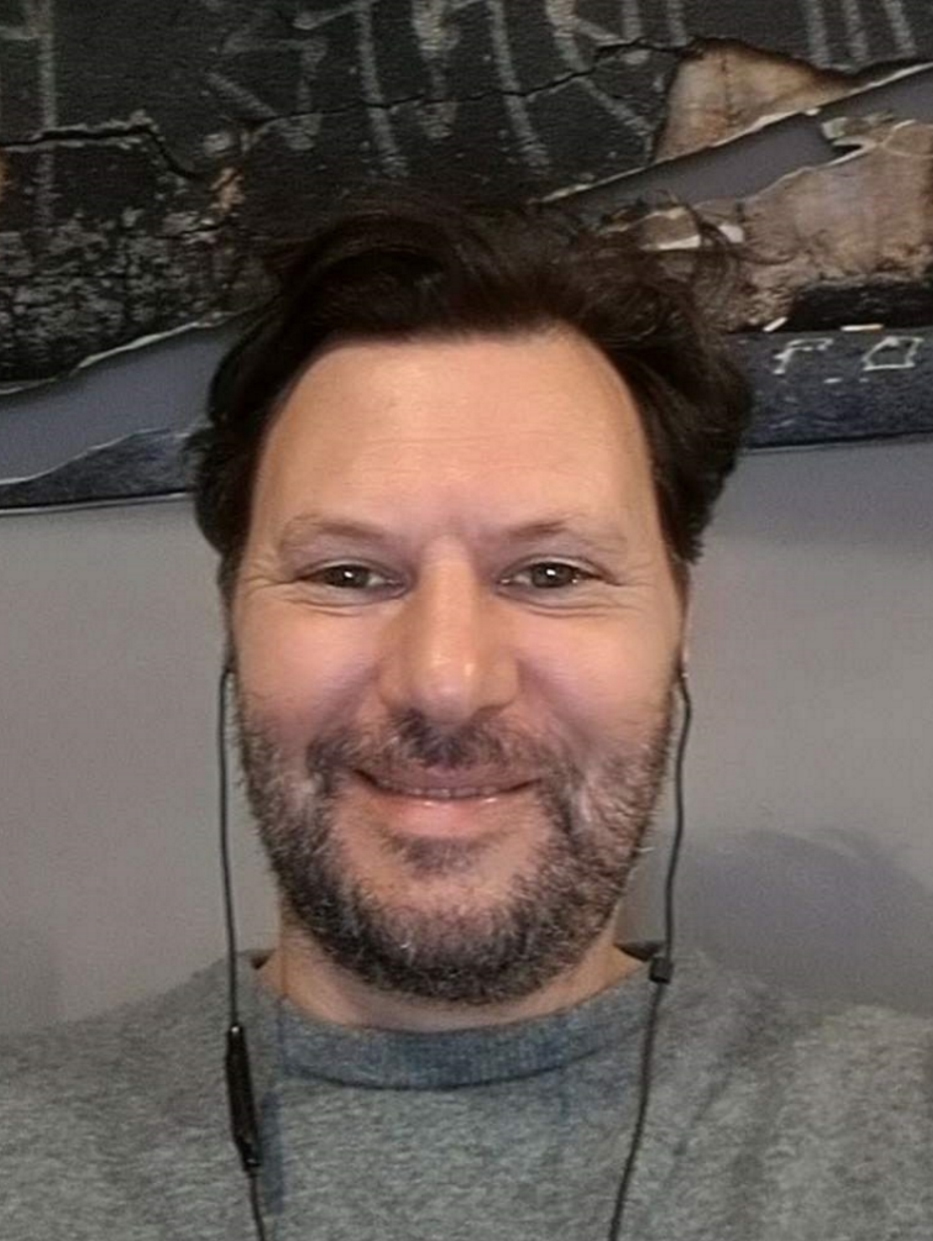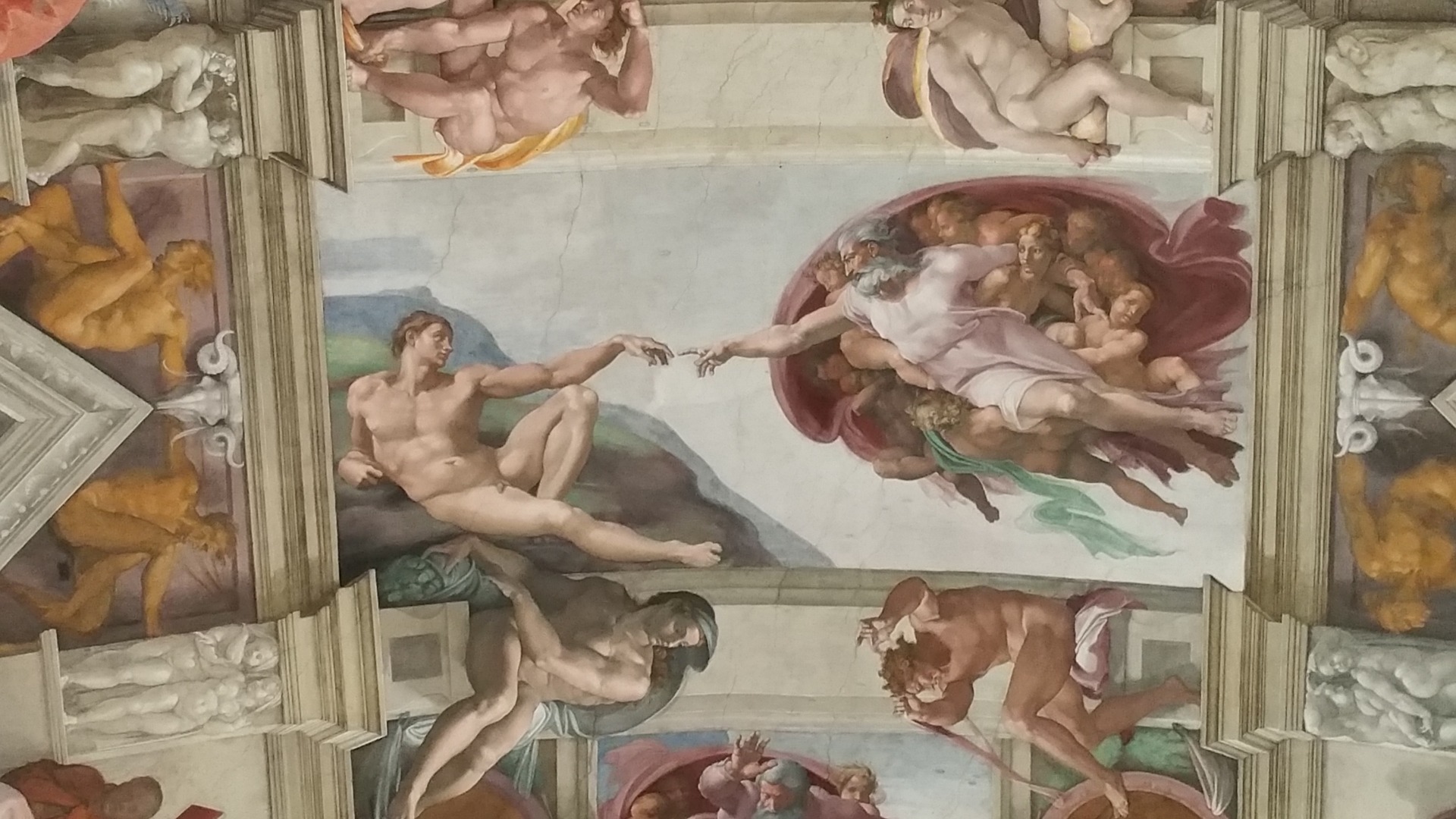
When I was in Cambodia, I encountered a highly-educated German with a PhD in neuroscience and a Masters in physics. We only spoke for about 30 minutes or so but when he left his departing words were: “There’s no such thing as the collective unconscious.”
His comment seemed peculiar to me at the time because we had not spoken about Jung’s theory. The conversation had mostly been around about philosophy so I wasn’t sure why he mentioned the collective unconscious at all. Regardless, the German’s opinion appears to be shared by many other academics, albeit not all.
The parting shot also made me wonder what his understanding of the collective unconscious is. Of course, everyone is entitled to an opinion, but opinions are fundamentally based on existing knowledge and/or experiences. Still, you can only believe what you believe.
It is understandable that Jung’s ideas attract scepticism. The unconscious cannot be measured and his theory that symbols are innate and inherited was largely based on empirical evidence and years of providing psychoanalysis.
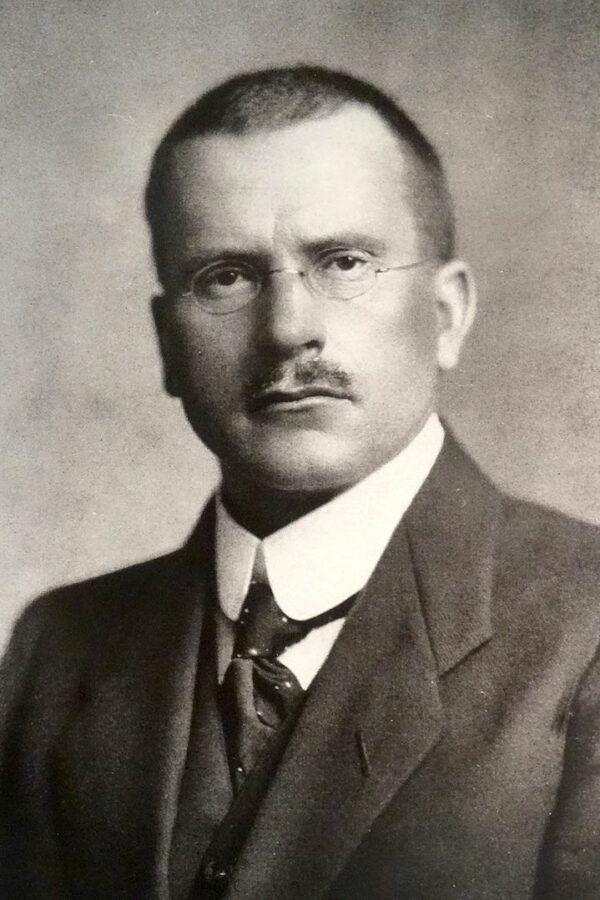
It should not be forgotten, however, that Jung’s interest in symbology enabled him to help a great many of his patients for which he earned a glowing reputation as a leading psychoanalyst. The inspiration he took from ancient symbolism also enabled him to write extensively on the topic of depth psychology and position him as a thought leader of modern psychology.
From my perspective, the concept of the collective unconscious has enabled me to understand some of the thoughts that appear in my conscious mind. It also explains weird experiences that cannot be explained by the concept of the personal unconscious alone.
Admittedly, my understanding of consciousness and the three aspects of mind has also been heavily influenced by the esoteric symbolism in ancient mythology, religious scripture and medieval alchemy.
My opinion is also based on personal experience. And I agree with Jung; consciousness appears to emerge from the personal conscious and a second source. This second source is what the eminent psychoanalyst called the collective unconscious.
Unless you have studied alchemy and psychology sufficiently enough to compare the similarities, it is difficult for a critical mind (especially a scientifically-oriented individual) to recognise the potential for a collective unconscious.
Having said that, my view on the collective unconscious deviates from Jung’s viewpoint somewhat. The only reason for that, however, is because recent advances in quantum science have made discoveries that go some way to explaining where the “second consciousness” may be coming from.
It’s not for me to force my opinion on you, nor will I try. On the contrary, you are free to form your own opinion and I encourage you to do so.
Nevertheless, in this article, I will discuss the various views about what the collective unconscious is, assess the criticism and finally give you a personal example of why there is a case for consciousness to arise from outside the personal unconscious.
In brief, the various points of views with regards to the collective unconscious are:
When trying to explain the collective unconscious, it is pertinent to understand the three aspects of mind;
I have explained the three aspects of mind in greater detail in the Beginner’s Guide To Symbolism but for the sake of clarity will provide a brief recap here.
The conscious mind contains thoughts and feelings you are aware of. For all intents and purposes, the conscious mind is how you relate to the world and experience what you perceive to be reality.
The personal unconscious is more commonly known as the subconscious. Content stored in the personal unconscious are programs that have been formed by information from the physical world that has been absorbed through the five senses.
Thoughts and experiences that are consistently fed into the personal conscious become concrete beliefs, attitudes, habits and personality traits. It is widely regarded that subconscious programs impact the experiences you have in life and can contribute to illness.
“The brain’s function is to co-ordinate the dialogue of signal molecules within the community. Consequently, in a community of cells, each cell must relinquish control to the informed decisions of its awareness authority, the brain. The brain controls the behaviour of the body’s cells.” ~ Dr. Bruce Lipton, Biology of Belief
The suprapersonal mind is likened to a force or energy that exists beyond the conscious and the subconscious mind. Jung refers to this aspect of consciousness as the collective unconscious which he said consists of archetypes that are common to all of mankind.
Some psychologists relate the suprapersonal mind to repressed emotions in the unconscious. For example, when people suffer a traumatic event, the brain shuts down to protect the conscious mind of the individual from experiencing the trauma.
This psychological process has been linked to patients that suffer from a dissociative identity disorder. Unless the trauma is healed and brought into the conscious mind, multiple personalities can develop and take control of the individual’s conscious mind.
Jung recognised this but also found that patients with any kind of neurotic behaviour suffered from some sort of dissociation. They did not have to suffer trauma but may have developed a belief that developed as a result of a poor relationship with their parents.
For example, a child from a broken family or alcoholic parents would not necessarily develop personality traits and unhealthy attitudes that prevent them from coping with life and nurturing positive experiences.

Perhaps the misunderstanding for why Jung meant by the collective unconscious stems from mainstream psychologists using both the subconscious and the unconscious to express the same thing. This can be confusing, and in my opinion, is wrong to do so.
For example, trained psychologists writing for Psychology Today describe the subconscious and the unconscious mind in the following ways:
”Subconscious: You dimly recognize that you feel a certain jealousy toward your teenage son. Yet you don’t know why. In reflecting about it, however, you begin to realize that where this feeling stems from is that (subconsciously) you begrudge the fact that he has so many more opportunities and privileges than you did at his age.” ~ Leon F Seltzer Ph.D (clinical psychologist)
“Unconscious: You have an aversion toward asparagus. The very sight of it makes you nauseous. Still, you have absolutely no idea why. What, because it’s been repressed, isn’t available to your consciousness is that when you were 6, your father insisted you eat this (new to you) vegetable on your plate, although you protested, for its smell back then was repulsive to you. But because you weren’t permitted to leave the table until you consumed it, after a fidgety hour you tried to shove it down your throat. . . and promptly vomited. Even worse, you got screamed at for the mess you made and told you were “disgusting.” ~ Leon F Seltzer Ph.D (clinical psychologist)
The example above comes from an article in which the writer is trying to distinguish between the subconscious and the unconscious. Notice here how the writer associates both the subconscious and the unconscious as storing information that is based on personal experiences.
This is, of course, a belief held by mainstream psychologists and not a Jungian belief. The mainstream view is that some repressed thoughts constitute the unconscious and hidden feelings surface from the subconscious even if that’s not what your conscious mind is thinking.
In my opinion, this view does not make a lot of sense. It is also very difficult for an individual to distinguish the origin of their thoughts and feelings. And if the patient can’t determine this, neither can the analyst.
Now read this example below:
“The subconscious is recognized as the source of creativity, intuition, inspiration, inner knowing, interconnectedness, and spiritual enlightenment. Within this realm reality shifts and expands, creating a matrix that is far more elastic and multi-dimensional than is perceived by the conscious mind. When we access and spend time within the subconscious we are released from the confines of our logical, practical mind. The messages we receive from our dreams and the primordial symbols, or archetypes handed down to us from our ancestors, inform us about what is unique, authentic, and sacred to each of us. When we heed these messages we are following the path of our soul’s evolution.” ~ Abigail Brenner M.D. (Psychiatrist)
There are a couple of points to note about his comment. Firstly, the description of the subconscious is completely different to the one above. Moreover, Brenner’s description of the subconscious is closely related to Jung’s collective unconscious.
These are not isolated cases I have picked out here. In mainstream psychology, there is a lot of confusion about which content surfaces from the “subconscious” and which come from the “unconscious”. Moreover, this model could be excluding an important aspect of consciousness we need to know about – one that cannot be measured scientifically; the True Self – missing traits and wisdom we need to develop to become whole.
The example below is not assigned to an author but nevertheless is an explanation given on the Psychology Today website. Again, the description of the “unconscious” is essentially how Jung described the personal conscious.
“Researchers know that the unconscious mind does the lion’s share of the brain’s work, but they don’t know exactly how all of it gets done, and it is an active subject of study. For example, one major area of research is how emotions take shape in the unconscious. Information is stored associatively in the brain, which is largely bundles of pathways of association—far too many to remember, but usually responsive to activation when needed.” ~ Psychology Today International
Another example on Psychology Today has this to say about the Unconscious:
“…to better understand your unconscious, it’s fundamental that you grasp that this is the part of your being that represses extremely unpleasant memories, or hides them away from you. As one author puts it, it’s that aspect of mind which “includes socially unacceptable ideas, wishes and desires, traumatic memories and painful emotions that have been repressed.” Again, in that self-regarded moment of crisis you hadn’t yet developed the ability to effectively deal with what was felt as gravely threatening your welfare.”
Again, the description alludes to personal experiences and traumas that have been repressed because the conscious mind could not deal with the experience as it happened in that moment.
The above opinions, as is the case with the majority of mainstream psychologists, are based on Freudian theories. Jung’s view of the unconscious, on the other hand, separated the unconscious into two separate parts, one of which supports the conclusion that the personal mind is comprised of information we have gathered from life experiences and another which originates from a metaphysical realm that exists beyond the body.
“The collective unconscious is a part of the psyche which can be negatively distinguished from a personal unconscious by the fact that it does not, like the latter, owe its existence to personal experience and consequently is not a personal acquisition. While the personal unconscious is made up essentially of contents which have at one time been conscious but which have disappeared from consciousness through having been forgotten or repressed, the contents of the collective unconscious have never been in consciousness, and therefore have never been individually acquired, but owe their existence exclusively to heredity. Whereas the personal unconscious consists for the most part of complexes, the content of the collective unconscious is made up essentially of archetypes.” ~ Carl Jung, The Archetypes and the Collective Unconscious
It is this second aspect of the unconscious that Jung called the collective unconscious. But because of its mystical nature, his theory is often criticised.
In the Beginner’s Guide To Symbolism, I discuss Freud’s model of the mind and show why his theory is problematic. As we can see from the comments above – on what is supposed to be an authoritative website – that Freud’s model has caused significant confusion.
In my mind, it makes sense that there is a second source of consciousness which lays outside the personal unconscious. Thus the subconscious and the unconscious should be divided into two distinct parts. In doing so, it is far easier to understand which part of your conscious thoughts are arising from; the conscious mind, the personal conscious (ego) or the collective unconscious (Self).
However, as you can see from the diagram below, both sources of conscious intermingle with one another and influence conscious awareness. This model is closer to Jung’s and, in my mind, helps me to figure out which repressed emotions need releasing or which aspect of my personality needs balancing.
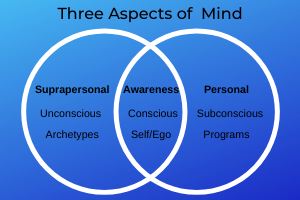
Jung’s theory of the collective unconscious hinges on his belief that the deep recesses of the mind contain archetypes. He described archetypes as signs, symbols, or patterns of thinking and behaving that are common to all human beings.
His theory explains that undeveloped aspects of consciousness remain in the unconscious and project on to the ego. Such projections make us act instinctively and oftentimes “out of character”.
The ego is the centre of conscious awareness that interacts with the outside world. The archetypes are aspects of the human psyche that belong to the inner world and project themselves on to the ego so the individual becomes aware of thier missing aspects.
When an archetype projects they can possess the ego and drive moments of madness, erupt in anger, cause you to make mistakes, make you irritable and moody, and even create accidents.
“We can hardly get round the hypothesis that an emotionally charged content is lying ready in the unconscious and springs into projection at a certain moment.” ~ Carl Jung, The Archetypes and the Collective Unconscious
The idea of projection is not uncommon in mainstream psychology even though the concept of the collective unconscious is generally dismissed.
On the other hand, the analysis of dream symbolism is common practice for other psychologists – especially Jungians. I have also found that interpreting symbols that appear in dreams – and in everyday life – can help steer clients towards self-realisation.
The principle reason for people to dismiss Jung’s collective unconscious is because of its correspondence with spiritual beliefs. The collective unconscious can be likened to the Cosmic Mind, Supreme Consciousness, Brahman and Akashic Records for example.
Jung also believed symbols and motifs that appear in dreams or thoughts of individuals are inherited from ancestors and that we are born with them in our unconscious realm.
This conclusion shares the common theme of reincarnation that is apparent in organised religions. However, Jung was not religious but rather believed ancient scriptures were an attempt to describe the psychological phenomenon present in all mankind regardless of culture.
“Jung, who construed alchemy as an age-old method of psychological transformation clothed in the terminology of metalwork…the main thrust behind Jungian psychology is that all occult and religious phenomena are psychological in nature and are connected to the relationship between the individual and the realm of the collective unconscious. The primary inhabitants of the collective unconscious are the archetypes – pre-existent ideas or basic categories of human awareness. They are centres of psychological energy that tend to surface in human consciousness through similar forms and images. These images are timeless and universal.” ~ Israel Regardie, Gold
Another way to explain the collective unconscious is an inner-knowing that appears as thoughts, intuitive feelings, instincts and images. Moreover, Jung surmised the gods, characters and magical objects in mythology were archetypes that are common among humans and thus we can learn about ourselves by analysing the symbols that appear in dreams and everyday life with events happening in our lives at certain moments.
“What makes alchemy so valuable for psychotherapy is that its images concretize the experiences of transformation that one undergoes in psychotherapy. Taken as a whole, alchemy provides a kind of anatomy of individuation. Its images will be most meaningful, of course, to those who have had a personal experience of the unconscious.” ~ Edward Erdinger, Anatomy of the Psyche
Jung believed that symbols contained in dreams had a universal meaning that shares similar things to different people. Essentially, they reflect traits that are inherently human nature.
Although we are largely unaware of contents in the collective unconscious, when habitual programs are holding you back, unconscious archetypes come into play and project themselves on to the ego. When this happens, it is an indication there is something you can learn about yourself.
Whenever a thought leader introduces a theory that goes against the grain of the accepted paradigm, it is typically dismissed. When Charles Darwin’s theory of evolution was announced at the Royal Academy of Arts, it was reported the general consensus was ‘that idea will never take-off’.
There are many examples of scientific and medical theories that were criticised at the time that turned out to be right.
The opposite is also true. Multiple theories that were accepted for years turned out to be incorrect. The church’s belief that the earth was the centre of the Universe is a prime example. Newton’s universal law of gravitation was accepted for over 200 years before Albert Einstein’s Theory of Relativity shows objects curve the fabric of space and time around them.
It’s no surprise that Jung’s collective unconscious is subject to ridicule within the scientific community. I have outlined the criticism below and will discuss both sides based in their merits.
Jung had a deep interest in alchemy and was knowledgable about Christain traditions together with oriental religions, particularly Chinese philosophy. He drew heavily on ancient texts to help him interpret the dreams of his clients.
Moreover, Jung recognised that symbols appearing in the dreams of his patients were also found in mythology. This conclusion led him to the idea of the archetypes which he presumed must arise from the unconscious. He also encountered patients that had visions that could not have come from the personal conscious, thus he felt symbols must arise from an ancestral memory.
Critics reference Jung’s source material to belittle his theory of the collective unconscious. He was accused of disrespecting scientific enquiry.
Even Jung’s work with indigenous groups such as the Pueblo Indians of North America, together with his interest in occult and religious symbolism has been derided as pseudoscience. Critics, including Freud, felt this connection was taking him further away from psychoanalysis.
It is understandable that academia would consider a theory inspired by archaic stories are considered mystical rather than scientific. It is impossible to challenge this claim. However, who’s to say that mysticism is closer to an understanding of nature that materialist science?
An understanding of symbolism reveals secrets about consciousness that modern scientists cannot explain because consciousness cannot be measured.
That is a matter of opinion, of course, but the concept of mysticism in modern thought gives rise to the idea spiritual or occult experiences that are linked with “foggy, confusion and vague thinking. ” (William Stance, Mysticism and Philosophy). There is a perception, therefore, that mystical experiences relate to magic, miracles and hocus-pocus.
However, ancient mystics considered their work as sacred sciences. They studied nature to understand themselves and the world around them. They were also much closer to their unconscious than the modern man with all our distractions and brainwashing.
Fortunately, some members of academia believe consciousness is worthy of exploration. The discoveries they are making fall in line with some of Jung’s theories that constitute the collective unconscious. So is the inspiration the Swiss psychoanalyst took from ancient mysticism so irrational?
Counter argument:
This criticism is, of course, a matter of opinion. Subsequently, it’s barely worth discussing as counter-argument because my feeling on ancient wisdom is the same as Jungs. You either see it or you don’t.
Jung’s theory for the collective unconscious arose from his understanding that some thoughts and feelings are not shaped by personal experience. His conclusion was that the deepest part of the unconscious mind must be inherited.
There are two ways to look at this; Lamarckcism and reincarnation.
The French naturalist and biologist proposed that individual characteristics passed down from generation to generation through genes. Jung also proposed that symbols in the collective unconscious were ancestral – or what Freud termed as ‘archaic remnants.”
Lamarck also proposed the idea that genes can be reshaped by information acquired from the environment. In short, experiences program a cell’s genes. His theory was considered radical and by the mid-1930’s hard completely fallen out of favour among academia.
Despite the new discoveries, some scientists persist with the materialistic view that the genes passed down by our parents stay the same our entire lives. But not every adult is like their mother, father or even siblings. Lamarckism seems to be a much more appropriate explanation for this than Darwinian randomness.
Experiments to investigate the collective unconscious would be very difficult to prove scientifically because the unconscious absorbs 11 billion bits of data per second. This is compressed into less than 50 billion bits for the conscious mind to absorb.
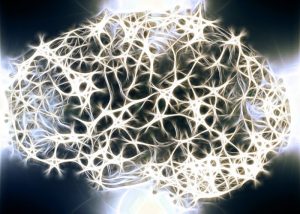
It would be very difficult for scientists to establish which content had been pushed into the unconscious and would take decades to perform such a study. Yet modern psychology recognises that experiences and emotions repressed in childhood do impact on our adult lives.
With this in mind, it is clear that information in the personal unconscious is repressed or suppressed. Moreover, it explains why psychologists typically label the unconscious and the subconscious as the same thing. It also provides a valid reason to completely dismiss the collective unconscious on the grounds the idea is “mystical fantasy.”
Critics do have a point here.
The question has to be asked whether thoughts and symbols we cannot relate to actually come from personal experiences or is the information stored in our genes?
For example, a comment left on a psychology website, Good Therapy provides an example of how people may perceive their experiences as a by-product of the collective unconscious but could be genetic:
“I majored in Psychology in the late ’70’s/early ’80’s and of course, I studied Jungian theory amongst others. I also minored in Dance, since I started at 5 years of age. But it was during my dance experience during college that I began to experience chills when watching certain formal dancers but especially African Dancers and Drummers. I started seeking information about my physical reaction to something visual, and I remembered my studies regarding the Collective Unconscious. Jung’s theory about that made perfect sense to me as to why I continue to have physiological responses to African performers in particular, and formal dancers in general. Oh, by the way, I am an African American female.”
The writer clearly believes in the concept of the collective unconscious. She also had me convinced until she revealed she had African origins. Subsequently, genetics could account for her dance experiences. Although African music may not have been personal to her, a distant memory could exist in her unconscious mind.
Jung was convinced that consciousness arises from a second source and interacts with both the subconscious and the conscious mind. Moreover, he was adamant that it could not be attributed to information gathered by sense perception.
We know that genes in DNA are passed down from our parents. Could the information in genes be memories of the distant past and remained unconscious in the family for generations?
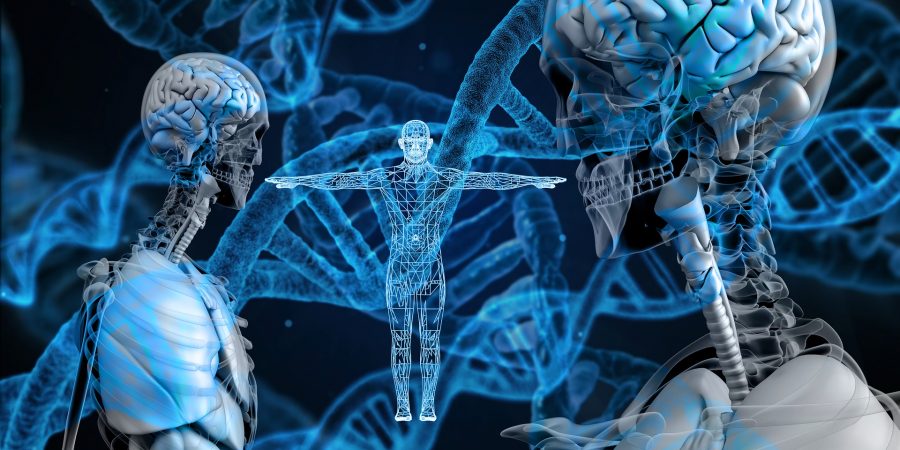
This is one view held by science that does have some logical grounding. It would also give scientific meaning to Jung’s “mystic” and “irrational” theory. Regardless, the fact of the matter is that criticism is always a matter of opinion.
Having said that, genetic inheritance does not explain some of the personal experiences I have had. But more not than later. I have a third theory, but before then, let’s discuss the second viewpoint for what Jung’s collective unconscious receives so much criticism.
From his writings, it is clear that Jung bought into the idea of the “soul” which is why his theory of the collective unconscious is derided as mystical fantasy. It is easy to assume the Swiss psychoanalyst perceived the idea of the collective unconscious from ancient wisdom which proposes our souls reincarnate many times.
Personally, I do not have an experience that I can relate to which categorically makes me believe reincarnation is a genuine experience. Having said that, I have met plenty of people that have, including my sister, Michelle. As far as I am concerned, none of the people I have spoken to about their past life experiences had anything to gain from telling me their story so why would they lie.
I certainly believe my sister because prior to her near-death experience, she would not have believed in anything mystical never mind reincarnation and past lives.
It’s obvious that Jung’s idea for this second source was heavily influenced by alchemy, Gnosticism, and the various Asian traditions. Closer inspection also reveals these cultural disciplines penned by ancient sages relate to psychology.
In Hinduism, for example, the concept of atman (the individual soul) and Brahman (the Supreme Intelligence) shares correspondence with Jung’s personal unconscious and the collective unconscious. Similarly, the gods of mythology share correspondence with the archetypes.
It’s worth noting that the “soul” is an ancient word for the subconscious. If you read any mystical writing and replace the word soul for the subconscious, they say the same thing. Take the paragraph below for example:
“The only means of overcoming limitations is to develop further the life of the soul. That’s when we discover the reason why we could not move from one thing to another is because of our own soul. We learn that “sight” of the supersensible world differs from perception in the world of the senses.” ~ Rudolph Steiner, Road To Self Knowledge
The inability of Jung’s critics to see beyond the personal conscious is because it cannot be measured by scientific reasoning.
However, in recent years, quantum scientists have shown that particles in atoms can communicate with one another over vast distances. The findings support quantum entanglement, which in essence, shares similar characteristics of the collective unconscious in that it explains how information stored in atomic particles communicate with one another.
What’s more, we know the world consists of an electromagnetic field which is made of atoms. The human body is also comprised of billions upon billions of atoms. So if particles in atoms can communicate with one another, you don’t need to stretch the imagination too far to assume that maybe, our thoughts become entangled with a particle which replies by way of thought.
Thoughts are energy, thus when we have a thought it emits a wave and integrates with the electromagnetic field we are all connected to. Science shows that when a wave moves, it carries matter, energy and information to different places.
When you apply this scientific discovery to mysticism, it provides an explanation for how the “atman connects with Brahman” in Hindu traditions or how God is omnipotent, omnipresent and omniscient.
As I explain in the Beginner’s Guide to Symbolism, God is consciousness and consciousness guides energy.
The Quantum Physicist, Dr. Rulin Xiu writes:
“Soul is the content of the information in everyone and everything. Heart includes the physical heart and the spiritual heart. The spiritual heart is the receiver of the information in everyone and everything.” ~ Dr Rulin Xiu: Tao Science: The Science, Wisdom, and Practice of Creation and Grand Unification
Jung’s belief that we are born with a pure consciousness also seems feasible despite its relationship to spiritual thinking. It makes sense that the personal unconscious will be empty until we absorb information through the five senses.
Moreover, it explains intuition, thoughts that seem to appear from nowhere and those weird experiences that cannot be attributed to contents that would naturally exist in your personal conscious. (I give an example of a personal experience below. I suspect you have your own).
Jung certainly had his own experiences of paranormal phenomena and thoughts he could not explain. But it was the countless occasions in which he encountered patients that had experiences and visions of images that were alien to them that convinced him there was a deeper unconscious source that pervaded the mind of mankind.
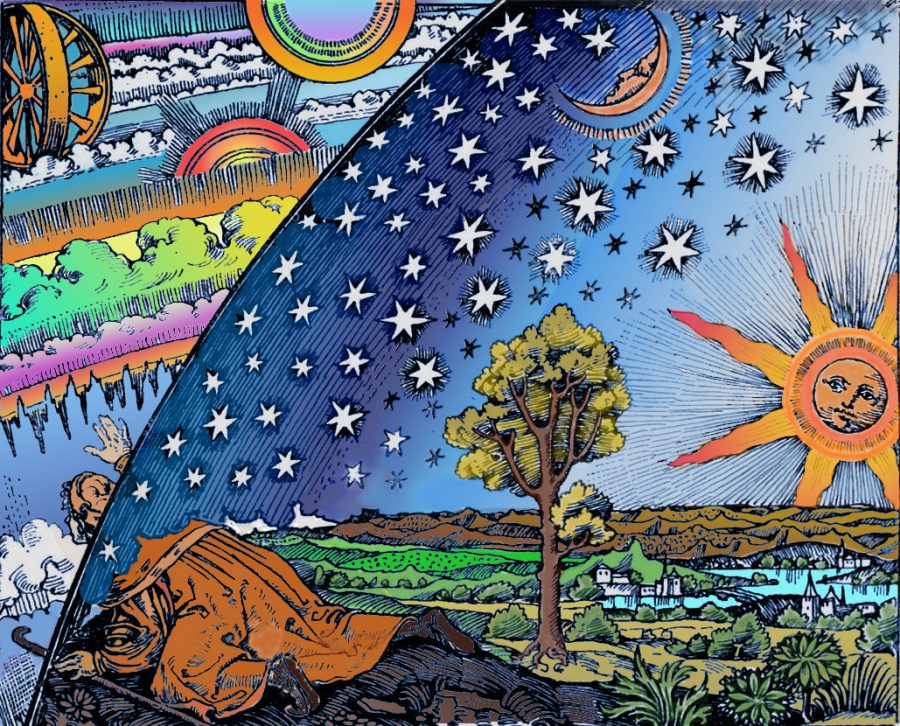
Critics argue that inspiration for new ideas can be developed through cultural reference, personal experience and imagination. It’ a fair point that has rational merit.
However, the mainstream explanation does not take into account Jung’s experience in which he treated patients that dreamt symbols they could not have been exposed to.
In Man and His Symbols, Jung gives an account of an eight-year-old girl that drew illustrations of images she had seen in her dreams. Her concerned father took the diagrams to Jung because they were “wholly incomprehensible” to him. The girl’s father claimed his daughter had never been exposed to such images.
Jung also described the diagrams as “the weirdest dreams” and deduced the symbolic images could not have emerged from the girl’s personal unconscious. Unfortunately, the girl died before Jung was able to speak with her in person and explore her dreams in greater depth.
The Swiss psychoanalyst also gives an account of an educated professor that came to him after dreaming of a symbol he could not associate with. The professor thought he was going insane. Jung explains:
“I simply took a 400-year-old book from the shelf and showed him an old woodcut depicting his very vision. “There’s no reason for you to believe that you’re insane,” I said to him. “They knew about your vision 400 years ago.” Whereupon he sat down entirely deflated, but once more normal.”
Our views of the world are merely perception. You will believe what you believe based on your own experiences. Jung did and so did his critics. Moreover, Jung claimed his critics simply didn’t understand his point of view because they viewed the world in a different way and thus misunderstood his ideas.
“My views about the “archaic remnants,” which I call “archetypes” or “primordial images,” have been constantly criticized by people who lack a sufficient knowledge of the psychology of dreams and of mythology. The term “archetype” is often misunderstood as meaning certain definite mythological images or motifs. But these are nothing more than conscious representations; it would be absurd to assume that such variable representations could be inherited.” ~ Carl Jung, Man and His Symbols
Jung was not the only psychoanalyst to make a connection between ancient mythologies and human consciousness. In actual fact, he originally got the idea from an early student of Freud, Herbert Silberer. Like Lamarck, Silberer was another thought leader that was ridiculed. Having been ostracised by his peers, he committed suicide.
In the 1930s, the German Philosopher and psychoanalyst Erich Neumann was also explaining the unconscious by drawing on knowledge given in ancient texts. To be fair, Neumann was a student of Jung and undoubtedly influenced by his tutor. Nevertheless, he recognised the connection between symbolism and human psyche.
It is clear to see from Neumann’s writing that he recognised consciousness comes from outside the body. Thoughts and instincts that project on to the ego do not always originate from the personal conscious.
“We have already spoken of the sudden emergence into consciousness of an idea as an original spiritual activity of the unconscious. The penetration into consciousness of spiritual contents, endowed with the character of intuitive cogency, and their capacity to dominate it, is probably the original form in which the spirit appeared to humankind. While an expanding consciousness and a strengthened ego introjects these emerging contents and understands them as an internal manifestation of the psyche, they originally appear to the ego “from outside” as sacred revelation and as numinous messages from the powers or the gods. Even if it calls them intuitions or inspirations, the ego that experiences these contents coming from without assumes a receptive stance vis-a.-vis the spontaneous phenomenon of spirit, a stance characteristic of matriarchal consciousness.” Erich Neumann, The Fear of the Feminine
Research in the area of consciousness verifies the theories of Jung and Neumann. It was originally believed that consciousness resides somewhere in the cortex but researchers have not been able to pinpoint where.
Panpsychism also alludes to the idea that consciousness pervades the universe. The theory holds that “everything in the physical world—all subatomic particles-are in some sense ‘conscious’ or have a basic kind of ‘proto-consciousness”.
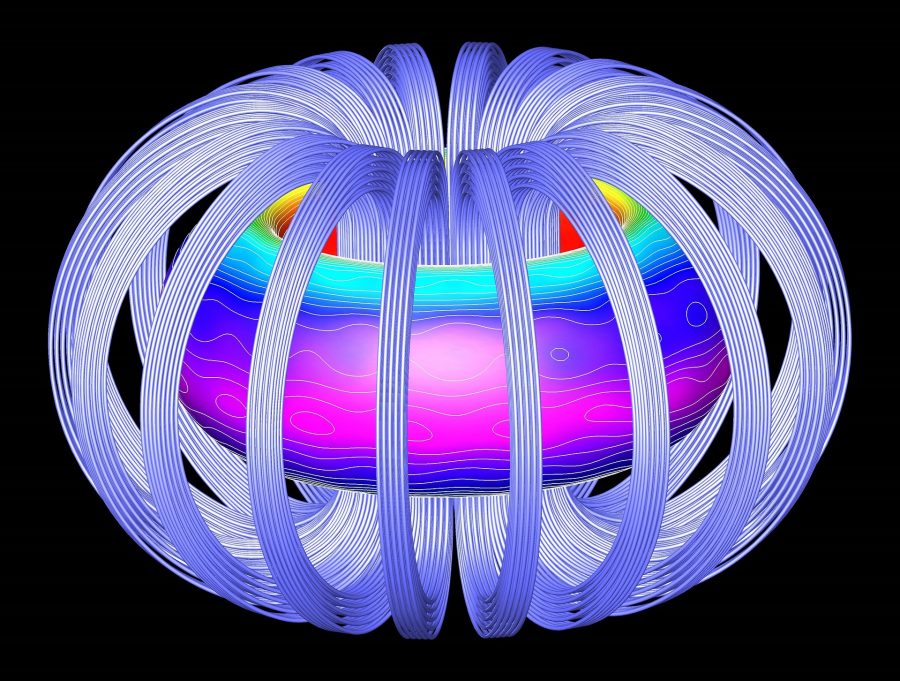
Another body of scientific research known as Neorealism suggests consciousness is a cross-section of the environment and exists outside the brain.
“Brain-centred theories of consciousness seem to face insuperable difficulties. While some philosophers now doubt that the hard problem of consciousness will ever be solved, others call for radically new approaches to conscious experience.” ~ Cambridge Center for Behavioral Studies
In other words, consciousness emerges from both within and outside the body.
On a side note, I originally found this quote whilst researching consciousness in 2017. When I looked for a source to link to from this article, the quote has been completely eradicated from Google search results.
I will leave you to determine why.
Critics argue that Jung’s definition of archetypes is vague and cannot be researched or demarcated with any kind of rigour. At best they are personality type. Subsequently, they are used as such in psychology today. The problem with this is process is it boxes people into a dominant personality, but it is the other personalities that we have to develop.
Synchronicity is dismissed on the grounds that is cannot be supported by scientific data. It is thought that synchronicity undermines the respectability of science as a discipline, promotes superstition and rekindles polytheistic ideas that fly in the face of the monotheistic Catholic tradition.
Counter argument:
Synchronicity may not be testable but it can be proven on empirical evidence. How many times have things simply fallen into place for you? Everybody has a story to tell about synchronicity at its finest.
For example, I have never met anybody that has pondered over a question or problem and not have the answer “miraculously” appeared several days later? Some would argue that answers do not appear every time and this is true to a point.
In my view, the answers do appear but the conscious mind is not aware of it in the moment. There have been times when I registered the answer, ignored it and only realised it was right there a few days later. The answer may be staring you in the face but you miss it because ego-consciousness rejects it. The information sinks back into the subconscious but comes back with greater force until you “learn from your mistakes”.
In his book ‘The Power of the Subconscious Mind’, Dr. Joseph Murphy explains how the subconscious engineers your desires so that the things you need fall into place. Like Jung, Murphy’s conclusion was based on many years of practising analytical psychology.
“Your subconscious mind is the master mechanic, the all-wise one, who knows ways and means of healing any organ of your body, as well as your affairs.” ~ Dr. Joseph Murphy, The Power of the Subconscious Mind
*NB. Murphy calls the unconscious, the subconscious.
Unconscious archetypes can be explained by the fact they reflect human nature. Consciousness has a pre-personal or transpersonal dimension which is manifested in universal patterns and images such as those found in all the world’s religions and mythologies.
Furthermore, Jung also proposed the archetypal psyche has a structuring or ordering principle which unifies the various archetypal contents. This is the central archetype or archetype of wholeness which Jung has termed the Self.
Jung states that the Self archetype can be used as a guide to explore the nature of your personality. It is the opposing aspect of the conscious mind that is in opposition to the ego. Whereas the ego relates to the information stored in the personal conscious, the Self relates to archetypal projections that emerge from the inner world.
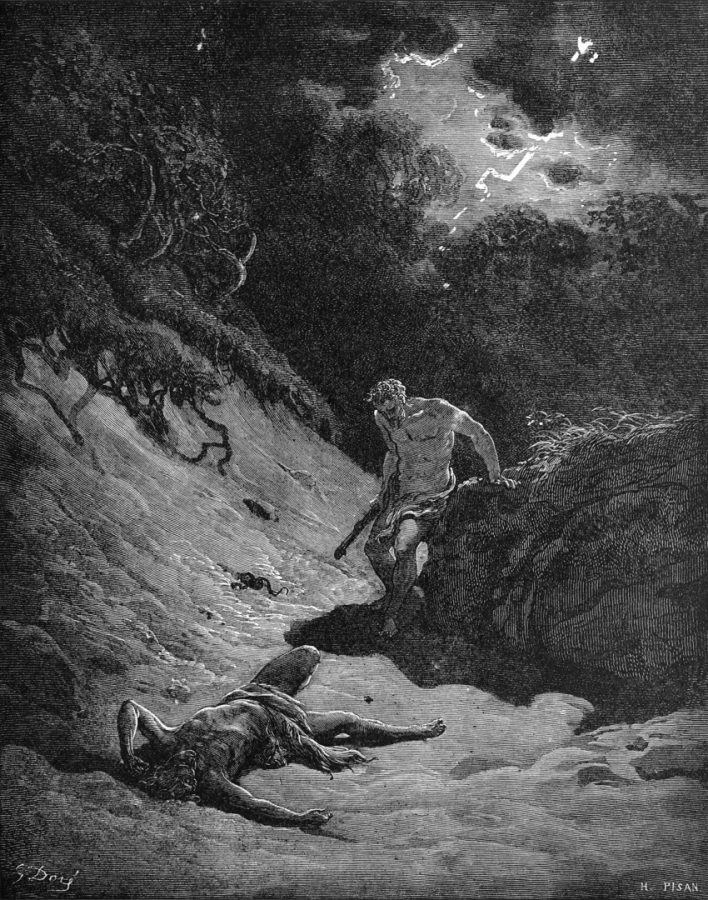
This is why symbols have more than one meaning. Jung also recognised that dreams have personal qualities that are intended for the individual alone. A conclusion can only be reached when all the symbols that appear in the dream are pieced together into a comprehensible story.
Jung’s belief that symbols and mythology embody human traits, his proposition has been labelled as “pseudoscientific theory”. Yet it is not without scientific reasoning that all humans share certain behavioural dispositions.
The problem Jung had in his day was that evolutionary psychology was not recognised as a credible theory. it was until the late 1990s that the research earned respect among academics – more than 30 years after his death.
Jungian psychologists, of which there is an increasing number, buy into the idea that archetypes define human nature and symbolism can be used to help patients bring unconscious content into conscious awareness. The difference between Jungians and critics is that the latter do not understand esoteric symbolism.
“Jung’s techniques are widely used in psychotherapy today; patients are encouraged to meditate upon a symbol, or to provide word associations with it in an attempt to unlock its meaning. Once this meaning becomes clear, the patient not only obtains new insights into his or her own mind, but usually finds that meaningful symbols begin to occur with greater and greater frequency, as if each unlocks a door into the unconscious through which other symbols are then allowed to emerge. ” ~ David Fontana, The Secret Language of Symbols
If your interpretation of symbolism is based on the exoteric meaning only, you will miss the point. As I explain in the Beginner’s Guide To Symbolism, exoteric interpretations are misleading.
This criticism points towards some of the past-times Jung adopted in his personal life. What critics rarely point out is that his supposed ‘psychosis’ was actually an experiment to explore the origins of unconscious content so he could heal himself.
Jung engaged in several experiments of note. The first was to build a miniature village using the pebbles and stones on the lakeshore near to his home in Zurich. Jung’s reasoning for this was to rediscover the vivid inner life he had as a child.
Another method of enquiry he pursued was to draw mandalas – symmetrical designs typically featuring a circle within a square. Mandalas have been used for thousands of years and Jung recognised they represented a symbol of wholeness – the psyche of a self-realised man. He encouraged his patients to draw mandalas for him to analyse.
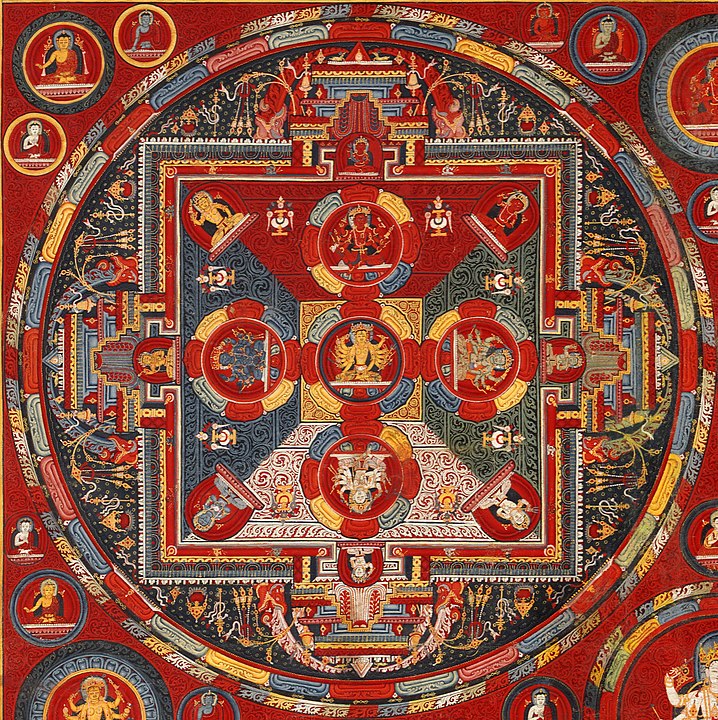
The building game and the drawing of mandalas helped Jung to develop a gift for ‘active imagination’; they released a stream of vivid dreams, visions and fantasies that helped him differentiate between the personal conscious and the mysterious second origin from which unconscious content surfaced.
Jung documented these experiences in his later work but because the images brought him into close contact with material that is considered ‘psychotic’ by mainstream psychology, his work has been used against him.
Counter argument:
I really don’t understand this criticism. It seems to me to be an attack on Jung just for being different. He was by all intents and purposes and extraordinary man. In my opinion, it is a disservice to criticise him for not being “ordinary”.
What is “ordinary” anyway?
It was through Jung’s work with schizophrenia that he recognised the link between the human psyche and the symbols that consistently crop up in ancient mythologies. Calling Jung’s theories as being outside “ordinary” reality is a short-sighted view offered by people that simply have a different approach to psychotherapy and life in general.
Or they don’t have an imagination.
I have a good understanding of symbolism and can clearly see how the unconscious communicates with us through symbolism; in dreams, analogies, through symbols etc. With this knowledge, I have cured my own mental health issues, helped my sister understand her dreams and integrate her animus together with many other people that have reached out to me.
There have also been numerous conversations with people that do not believe there is a connection between symbolism and the psyche. I am more than aware that, to the uninitiated, symbols and dreams do not make any sense. It is clear why Jung receives so much criticism from his peers.
There is, of course, an argument to say, ‘why doesn’t the unconscious just tell us what we need to know.’ It’s a fair point. Why the unconscious prompts us with mindboggling images is arguably a fact of life we will never be able to fathom.
However, analysts that are proficient in interpreting symbols have shown it is possible to help people overcome neuroticism.
Critics that have accused Jung of suffering from psychosis have probably never experienced anything paranormal or out of the ordinary. Otherwise, they have simply dismissed such experiences because they have no rational explanation for it.
Yet Jung differs here again. He actually developed a technique that enabled him to induce visions and hallucinations by allowing the conscious mind to flow back and forth between the unconscious and awareness. Self-inducing visions is not psychosis.
Anybody that has tried, and become adept at lucid dreaming, can probably relate to Jung’s ‘active imagination’ exercise. Likewise, anybody that can fall into a deep meditative state through meditation or yoga Nidra will know how it is possible to invite vivid images into your mind’s eye.

It is a known fact today that children become less imaginative after attending school. Studies reveal that a child’s innate creativity becomes nullified to the point they are less able to produce unique and unusual ideas. Other people can’t focus long enough to think deeply. The average attention span is around 9-seconds.
Jung arguably recognised that because most people lack imagination, the inspiration they have cannot be part of the personal unconscious. It must, therefore, be part of the collective unconscious.
But regardless of the origin of unconscious thought, Jung recognised the goal of life was to integrate unconscious content into the conscious mind. He proposed the ‘process of individuation’ was mastery of both the outer physical world, which is moulded by common belief systems within a cultural structure, and the inner world which he related to archetypes portrayed in world mythologies.
This suggestion had been considered radical at the time. Freud had also encountered criticism when he fathered the idea of the unconscious many years earlier.
Jung also believed the patriarchal system imposed into western culture separated westerners from exploring the unconscious. A divorce from our imaginative faculty does not enable us to recognise and integrate aspects of our nature that are absent from conscious reality.
It’s worth remembering that Jung’s conclusions were reached by years of working with patients suffering from schizophrenia and psychosis. The reason for their mental illness was because the conscious mind – shaped by society’s norms – was unable to associate with traits that constitute human nature.
An inability to invent unusual ideas also accounts for why a large proportion of the scientific community has been accused by their peers for basing their opinions on materialistic training.
“Get over it, and accept the inarguable conclusion. The universe is immaterial-mental and spiritual” ~ Richard Conn Henry, The Mental Universe (Professor of Physics and Astronomy at Johns Hopkins University
In my opinion, Jung did not suffer from personal psychosis, he had an imagination and understood how to bring the contents of his unconscious into conscious reasoning.
But Jung’s critics do make valid points in relation to some of his ideas. There is very little in the counter-arguments, to suggest the second source of consciousness is merely a deeper layer of the personal unconscious.
Other than memories stored in genes, the evidence in support of a collective unconscious cannot be scientifically tested so, of course, cannot be scientifically proven or disproven.
Regardless, Jung’s understanding of symbols and the psyche do have a place in psychotherapy. Moreover, we cannot rule out the possibility of a second source of consciousness that comes from outside the body. No matter where it comes from, consciousness does seem to try and guide us in the right direction.
When I tell people I decode symbolism and explain how the unconscious works, it is met with mixed reactions. Some people say “cool” whether they know about symbolism or not. Others are generally interested and want to explore the topic whilst others position it in the ‘mystical’ bracket and don’t believe a word.
My only response to this latter group is do not base an opinion on something you have never explored for yourself. If you don’t see how something works, you cannot understand that it does work. But clues do exist.
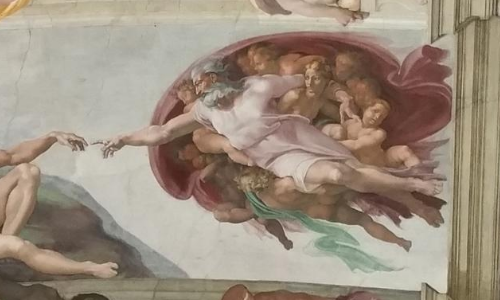
They used these observations to understand the human psyche. Moreover, they used nature as symbolism to explain human nature in story form. Mythologies are a work of genius.
People that don’t believe symbolism has any significant meaning take the common view that ancient cultures were “primitive” and thus could not have had such a profound understanding of the world or the human psyche.
Moreover, the dominance of behavioural science in modern thinking gives rise to the opinion that the physical world is the only true reality. It is also argued that psychological phenomena are hallucinations or psychosis.
As a result, behavioural psychology typically focuses on how the human body functions in response to external stimuli. They reject the existence of unconscious instincts and classify actions outside “ordinary reality” is a mental health issue.
As a matter of fact, I once had a conversation with a behavioural psychologist. My immediate response to her profession was “Oh, so you must know how the unconscious works.”
Her response was, “My patients are not ready to work with the subconscious yet.”
As you can imagine, I was taken aback by this comment. It is widely regarded that between 90-95% of our actions (behaviours) come from the subconscious. Surely by observing these behaviours, analysts would be able to identify patterns and trace the behaviour back to a root cause.
In behavioural psychology, apparently not. The irony is staggering.
Let me give you an example:
Recently, on two separate occasions, Saturday and Sunday in the same weekend, I encountered a black cat on the street. Both times, the cat approached me, let me stroke it behind the ear, then weaved in and out of my legs. They were not the same cat because I was in different neighbourhoods miles apart.
In my experience, this is very unusual behaviour for cats when they first meet a stranger. They normally stare for a while then scurry under a car.
If you look up the symbolic meaning of cats on the internet you will find they represent “communication”, “magic”, “death and rebirth”, “healing”, “independence”, “patience”, “curiosity” and a few other things which don’t really mean anything. These are the misleading exoteric meanings I mentioned earlier and sure enough, most of the explanations offered on these websites miss the mark.
The esoteric meaning is a signal to slow down, rest, still your mind and communicate with your unconscious. Cats are spiritual animals.
The synchronicity of seeing cats for me was a reminder to reconnect with my inner-world. When they appeared, I had spent six hectic weeks moving country, moving apartments, catching up with friends, organising visas, working a full schedule and celebrating Liverpool FC winning the league (just thought I’d sneak that in. It’s been 30 years!)
As a result of all the distractions, I had neglected my meditation, my diet and forgot I am not 25 years old anymore. Moreover, I was not listening to the Feminine Principle which asks you to take care of yourself, love, nurture and be creative. Having neglected the Feminine, I was feeling overwhelmed, exhausted and chaotic.
The appearance of the cat was a reminder to be still (patience), connect with my unconscious (communication, independence, curiosity) and recharge my batteries (healing, death and rebirth (of energy), magic). Given the cats were black, my unconscious was warning me that the devouring mother (symbolised by a witch in mythology) would be on my case if I continued to neglect my body and mind.
At the time, I didn’t pay much attention to the colour of the cats. However, when I started feeling frustrated, moody and irritable a few days later, I realised the devouring mother was entering my realm of consciousness. So I took the foot of the gas, re-organised my lifestyle and restored balance.
First of all, this example illustrates why you need to know the esoteric meaning of symbols and not simply accept the exoteric meaning you find on multiple websites. Cats are not a “Go-Go signal” or an incentive to take risks just because they are said to have nine lives!
Secondly, it illustrates that you need to be consciously alert in order to notice synchronicity of numbers and symbol or real-life experiences that could be symbolic. When something unusual happens more than once in quick succession, take notice.
Thirdly, it doesn’t matter too much if you don’t notice, or initially understand, what symbols and numbers are trying to tell you immediately. If you are aware your unconscious is trying to tell you something, you will reach the right conclusion eventually.
Symbols are a means for the unconscious to communicate to the conscious mind in a way that enables you to understand your inner world. What happens in your inner world is projected into the outer world. This is the Law of Correspondence – a law of sacred science, not modern science.
Having used symbols for my own personal development, together with helping many other people as well, it is my belief that interpreting the esoteric meaning of symbols can help guide you towards an understanding of your inner world – the unconscious content trying to get out.
In addition to Freud and Jung, evidence of this has been put forward by several respected psychologists including Edward Erdinger, Louise-Marie von Franz and Erich Neumann to name a few.
“Some of the symbols in such dreams derive from what Dr. Jung has called “the collective unconscious” that is, the part of the psyche that retains and transmits the common psychological inheritance of mankind. These symbols are so ancient and unfamiliar to modern man that he cannot directly understand or assimilate them.” ~ Joseph L. Henderson, Man And His Symbols
Just to remind you, Jung said archetypes reside in the collective unconscious. This aspect of the unconscious then projects on to ego-conscious.
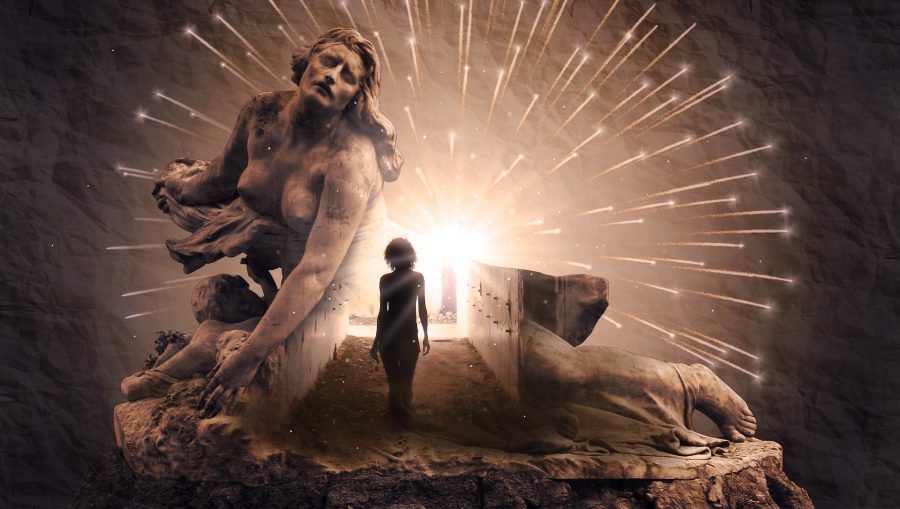
Understanding the meaning of symbols reveals aspects of your personal nature that have been obscured by subconscious programs. Personal content has been repressed or suppressed is information absorbed from the material world by the sense organs.
This information includes what you have been told by your parents, teachers, religious leaders, politicians, the media and have subsequently become societies norms.
Much of this information is low-quality information and is ultimately responsible for limiting beliefs, negative attitudes, character weaknesses, low self-esteem, a lack of self-love and many other neurotic behaviours that plague society.
It’s worth noting that subconscious programs with poor information create a false reality, a perception of the world you believe is material reality.
Some scientists say reality is an illusion. Some say psychological phenomenon is an illusion. Opinions will always be split in the current paradigm and people will be biased towards a certain opinion based on the information already stored in their personal consciousness.
This is why Jung’s theory of the collective unconscious draws so much criticism. The majority of physicists probably don’t agree there is a higher consciousness that exists outside the body. When I told my dad atomic particles communicate with one another (string theory) his response was “Bollocks!” His opinion was based on a fifty-year-old belief about atoms he learned at University.
You must decide the puzzle of the unconscious for yourself. However, let’s give the matter closer inspection. If the personal unconscious is responsible for instinctual behaviour and intuitive feelings, how do you explain weird experiences that are clearly intuitive, but cannot be attributed to content in the personal unconscious?
These moments cannot be explained by genetic inheritance either.
“Our pursuit of understanding spiritual experiences is now a part of what it means to be human.” ~ Kevin Nelson, MD – The Spiritual Doorway in the Brain (Neurologist)
It seems apparent to me that thoughts surfacing in my mind appear to come from a second source that is not from personal experience. Some of them cannot even be information stored in my genes. You have probably had weird experiences you cannot explain as well. How many times have you had a thought come to mind but have no idea how or why you would think that?
You may remember I mentioned that quantum particles in atoms hold multiple megabytes of information and that several independent scientific experiments reveal that quantum particles can communicate with each other over vast distances.
It is also widely accepted that we receive “messages from the Universe”. Even if you believe this is only a saying, I suspect you have had weird experiences that you cannot explain with any rational thought.
On the other hand, some of the weird experiences I have had can only be explained by the mysterious second source. Moreover, these experiences are why I believe it’s important to understand esoteric symbolism if you want to understand the True Nature of consciousness.
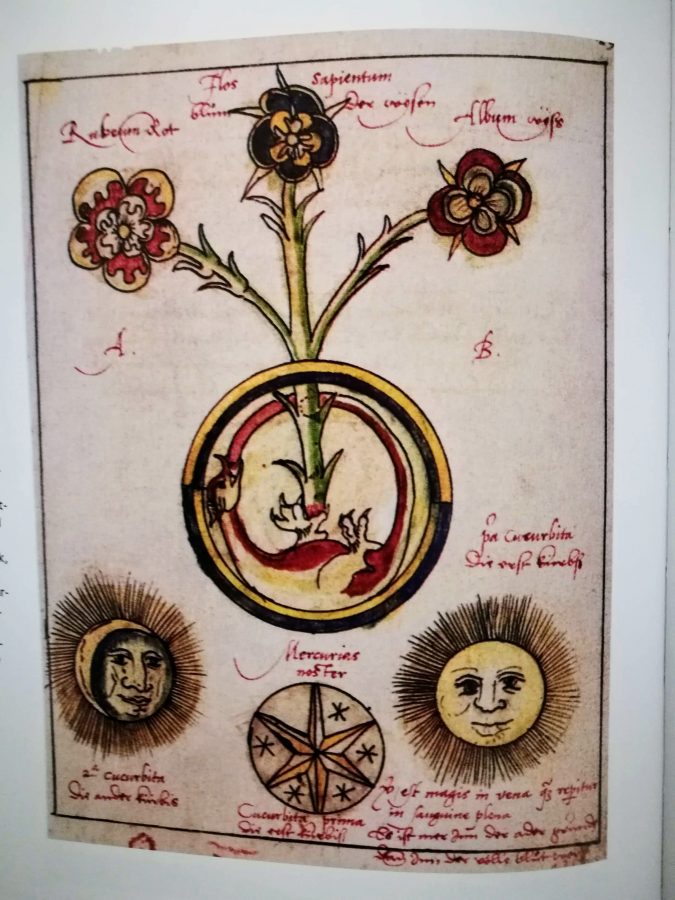
For me, this doesn’t make sense. Sometimes you have a feeling that something is not right or is right before it happens. Sometimes, these feelings arise to new experiences.
Intuition can also feel vague, but as thoughts begin to take shape, the ego judges the content. This is not always the best thing to do. It is in these moments when the ego gives you his false rationale and you can lose sight of the pure wisdom stirring within. You then go against your intuition only to learn later that your intuition was right.
You may also have other intuitive experiences that come from the higher conscious and prompt you into action. They are typically weird experiences you can’t explain. People will typically pass these experiences off as a supernatural experience such as a “message from the Universe” or the “spirits/angels guided me.”
It also communicates to you in those ah-ha moments and when answers to things you have been thinking about miraculously appear from “out of the blue” or you instinctively know something is right.
For example, in a flash of inspiration, you suddenly understand everything, but then the idea fades and the ego-mind is confused about the information that flashed into your mind. It can take hours, days or even months for that moment of understanding to be realised in the conscious mind.
Is that a learned behaviour? Is it content stored in the personal consciousness?
Sometimes yes, but not every time.
How many times have you had an experience that cannot be a learned behaviour that you are certain cannot have originated from the personal unconscious/subconscious mind?
Jung’s archetypes explain why this might happen. Your unconscious is not only trying to help you thrive, they actually provide information in the moment you need it. The unconscious is pure wisdom.

This is why it’s important to know where your thoughts are originating from; personal unconscious or the collective unconscious.
I’ll give you a personal example of a time when I connected to the higher self (although at the time I did not realise that is what was happening).
At school, I took a class called European Studies. It was an alternative option to Geography but solely on Europe. One day, the teacher, Miss Colliwell, gave us a quiz for a bit of fun at the end of the school year. She would describe specific features of a city and the pupils had to identify the place.
I remember the first city she described was Paris. The second city was Moscow.
When Miss Colliwell saw what the third city was, she said: “Oh this one is a little more difficult.”
A thought immediately popped into my head. “Rio de Janeiro.”
I’ve no idea why Rio de Janeiro would surface in my 14-year-old mind. We were studying Europe. After two descriptions had been read, I knew it was “Rio de Janeiro” so spoke up. The look on Miss Colliwell’s face was one of bewilderment.
Some people would chalk this down as a lucky guess but the thought came to me before any clues had been read. Also, this kind of thing happened to me quite often as a teenager. The chances of me guessing the right answer are, I imagine, pretty high.
Moreover, if I was going to consciously guess a city beforehand, it would have been a city in Europe – given the class was European Studies.
The experience cannot be simply passed off as a learned behaviour either. How would I learn that? So the information did not come from my personal unconscious. Evidently, the thought came from the unconscious but it was not a repressed emotion resurfacing.
The only rational explanation I have is that in that moment, I connected with the Cosmic Intelligence. So imagine if it were possible to tap into the Unconscious and retrieve answers you need to know in an instant all the time.
It is when you expand conscious awareness.
People can criticise Jung and every other original thinker all they like, but in doing so, they only prove they have no imagination, are bound by programmed information and have a closed mind.
